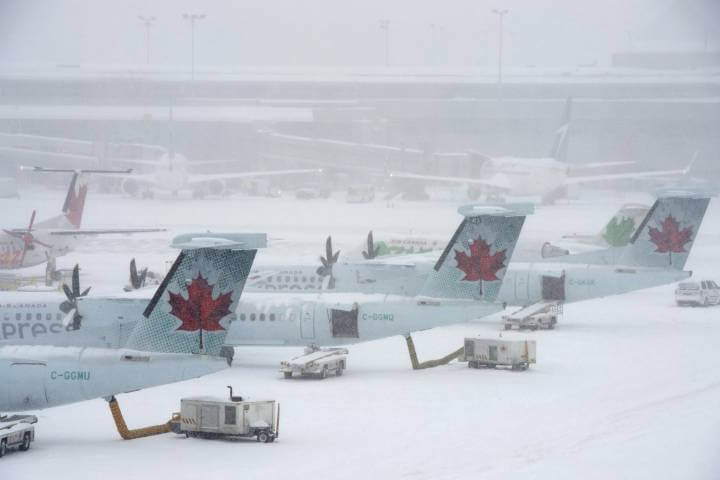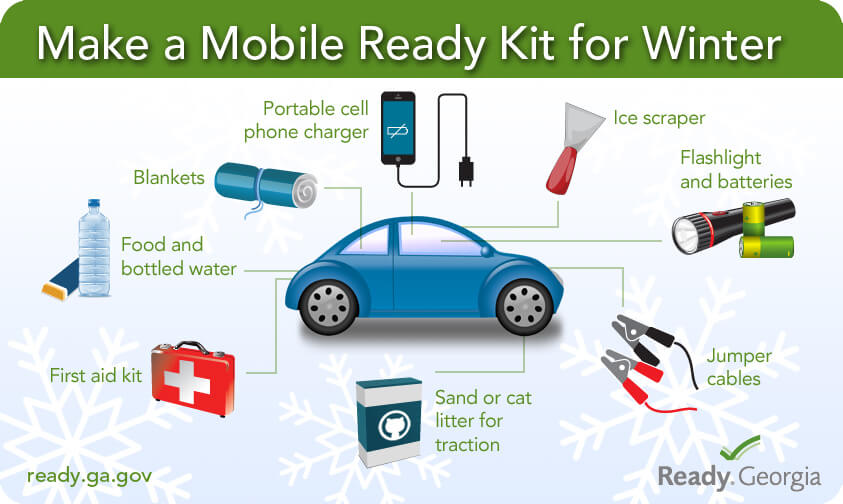
Photo: CBC News
No doubt about it, the harsh winter weather in Sault Ste. Marie and Canada can sometimes throw a wrench in your travel plans. To get to your destination and back safely, remember these essential winter travel tips for your next winter jaunt:
1. Fly Nonstop if Possible
Although it’s often more costly to fly nonstop, it makes sense for winter travel. If you get halfway to your destination and winter weather delays your connecting flight, you could end up spending the night on a cold, hard bench inside the airport or in a hotel. Use the “Show only nonstop flights” button to find flights when you search or search nearby airports to find alternative nonstop flights.
If you do need a connecting flight, be sure to tell your flight attendant if you have a tight connection. He or she may be able to get you to your connecting flight more quickly.
2. Book Morning Flights
Try to book morning flights in the winter because if your flight gets delayed or cancelled, most of the time the airline will put you on a flight later that day if there are seats available. If they don’t, you still have a chance to fly out later that day from a different airport or with a different airline. Worst case scenario, if all flights are cancelled, you still have the option to drive to your destination.
3. Prepare for Changing Planes Outdoors
If you do have a connecting flight, don’t leave your coat in your luggage or your car, even if you’re heading to a warmer climate. You may have to walk outside to change planes, especially at some more rural airports.
4. Leave Early
Whether you’re flying or driving, leave early. During the winter months, weather conditions can seriously impact your travel, causing delays. When you leave early, you won’t have to stress out over whether you’ll arrive in time, no matter what the weather.
5. Stay Updated Online
Many airlines and airports post their flight delays or cancellations to their social media so make sure you are following their accounts on Facebook and Twitter. If you’re not the social media type, you should be checking your airline’s website or your email periodically for important updates about your flights.
6. Carry a Winter Emergency Kit

Photo: Ready Georgia
Before the first snowfall, pack some winter supplies in your trunk and glove box. Your emergency kit should include a warm pair of gloves or mittens, an extra coat, a warm pair of pants, a blanket, a flashlight, extra batteries, a tool to clean your windshield off, a water bottle, and an energy bar or two. A bag of rock salt or some clay cat litter can also give you traction if you get stuck in the snow.
7. Check Out Your Car’s Features
If you have a relatively new car you’ve never driven in the snow before, or if you’re driving a rental car, familiarize yourself with the location of the hazard lights, defroster, and windshield wiper buttons. Know how to shift down into a lower gear. Read the owner’s manual to learn if your car has special features, such as anti-lock brakes or electronic stability control. If you can, find an empty parking lot during your first snow, so you can acquaint yourself with how the car handles in these conditions.
8. Winterize Your Car
Have your car checked out for its winter readiness well before the first winter storm. Make sure you also keep your fluids topped up after the weather turns cold. Always consider winter tires, even if your car is good in the snow. Winter tires can give your car the edge in deep snow or ice. Check both the tread and the air pressure in your tires often during the winter. Cold temperatures can cause the tire pressure to drop.
9. Drive Slowly, See, and Be Seen
Before you pull out of the driveway, clean all the snow and ice off your headlights and taillights as well off your windows. Make sure your defroster has heated up your windows before you leave so you won’t have foggy windows on the road. In heavy rain, snow, and especially ice, drive slower than the speed limit.
Drive about half the normal speed or slower and leave plenty of room ahead. Don’t tailgate—even in busy urban traffic or in traffic jams. Don’t use cruise control. It might accelerate at the worst time, such as on a hill or on an icy bridge.
10. Watch Out for Danger Spots
Look well ahead of you as you drive. If you see snowdrifts, icy spots, or a bridge ahead, slow down. Because water evaporates and re-condenses, the water in a creek or other body of water often causes the road surface to freeze. Don’t take chances.
When you take these precautions before and during winter travel, you will be prepared for almost all situations the harsh weather can throw at you during your trip.